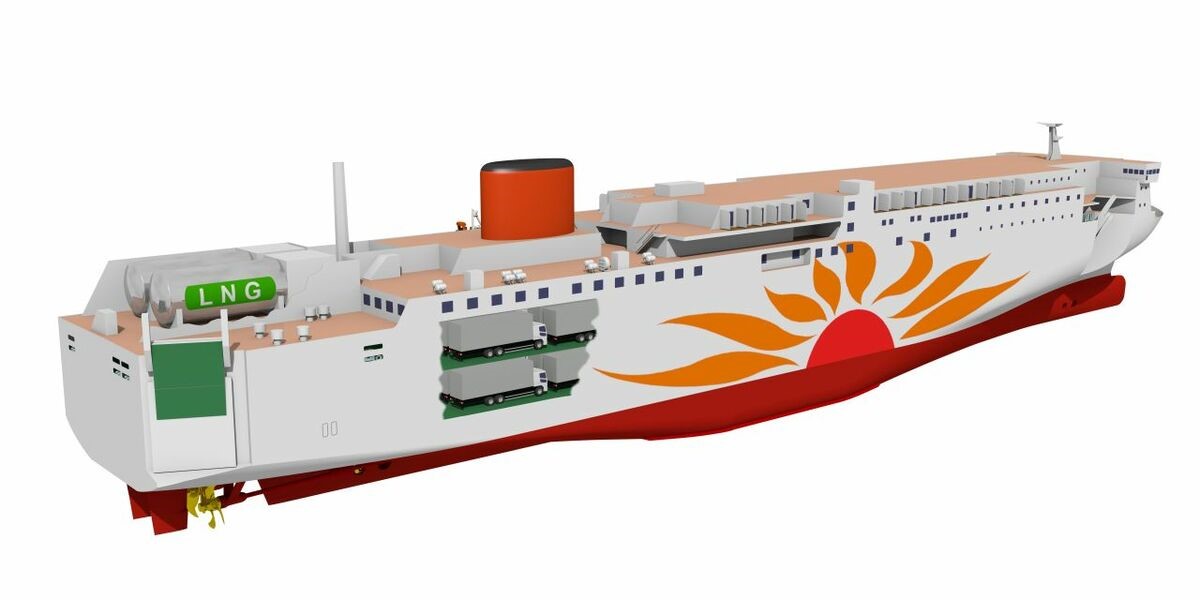
Japan takes important steps towards the development of LNG as a marine fuel, thanks to an ambitious development plan and two significant bunkering tests in the ports of Nagoya and Kobe made by the transport company MOL Group (Mitsui O.S.K. Lines).
In the second part of 2019, the Group first announced his participation in the first LNG bunkering of the Kobe port. Organized by Kobe City Port and the Kobe Port Authority the test was implemented through the LNG tug called Ishin, owned by the same company and operated from the subsidiary Nihon-Tug-Boat Co. The LNG fuel used for the test was transported by a tank truck from the Himeji LNG plant (about 30 miles) of Osaka Gas Co., and through a truck-to-ship system was used to power the Ishin tug anchored to the dock n.4., confirming that LNG can be safely supplied to vessels at the port.
The LNG fuel used for the test was transported by a tank truck from the Himeji LNG plant (about 30 miles) of Osaka Gas Co., and through a truck-to-ship system was used to power the Ishin tug anchored to the dock n.4., confirming that LNG can be safely supplied to vessels at the port.
MOL then tested Ishin's bunkering in the port of Nagoya. Also in this case we talk about the first LNG bunkering trial for the port structure, and similarly to the first test the fuel was transported by truck from a LNG terminal (Toho Gas Chita-Midorihama) and then it powered the tug in port through a truck-ship system. MOL and Toho Gas said they intend to continue working to reduce the environmental impact of the maritime industry by promoting the use of LNG fuel by the ships of Nagoya port.
Ishin was the first LNG-powered tugboat in western Japan, produced at Kanagawa Dockyard and delivered to the port of Kobe in late February 2019. It has a gross tonnage (a measure of all the internal space in the vessel) of 247 gross tons. It has a length of 43.6 meters (143 feet). It has a breadth of 9.2 meters (30.2 feet), a draft (the amount of the hull that is underwater) of 3.15 meters (10.3 feet) and a speed of 16.4 knots (18.9 miles per hour). The tug powered by two 6EY26DF dual-fuel commercial marine engines manufactured by Yanmar and features a removable LNG fuel tank mounted on the stern deck: a setting that according to MOL, enhances convenience in bunkering, maintenance, and inspection.

It will be used to escort large ships in the bay of Osaka and the inland sea of Seto, but it has also been commissioned with the aim of developing expertise on LNG-powered towing operations and stimulating an LNG fuel supply system for the ships in the bay.
It is designed to comply with the International Safety Code for ships that use gas or other low-flash point fuels (IGF code) and has earned “four stars” in the energy classification program managed by the Japanese Ministry of Land, Infrastructure and Transport and Tourism, that aims to promote the reduction of emissions and energy savings for coastal ships.
The tests and investments of the Company are therefore part of a process of increased Japanese interest in LNG, which is necessary to respond to the tightening of regulations on gas emissions on a global scale and the consequent increasing number of LNG-fuelled vessels coming into service, making urgent the development of bunkering ports.
The same Group, whose member companies are working together to promote the wider adoption of LNG, is now planning to construct Japan's first two LNG ferries. MOL plans to order ships from Mitsubishi Shipbuilding Co., while the group company Ferry Sunflower Limited will charter the ferries after delivery and launch them on its Osaka-Beppu route from the end of 2022 through the first half of 2023, as replacements for vessels currently in service.

 EN
EN  it
it


